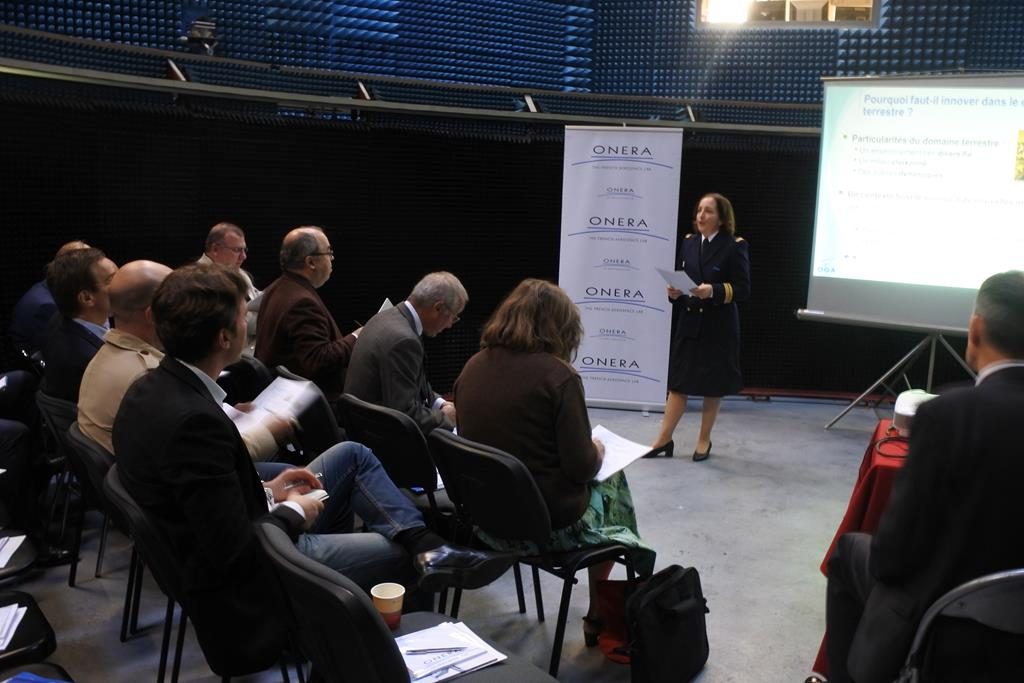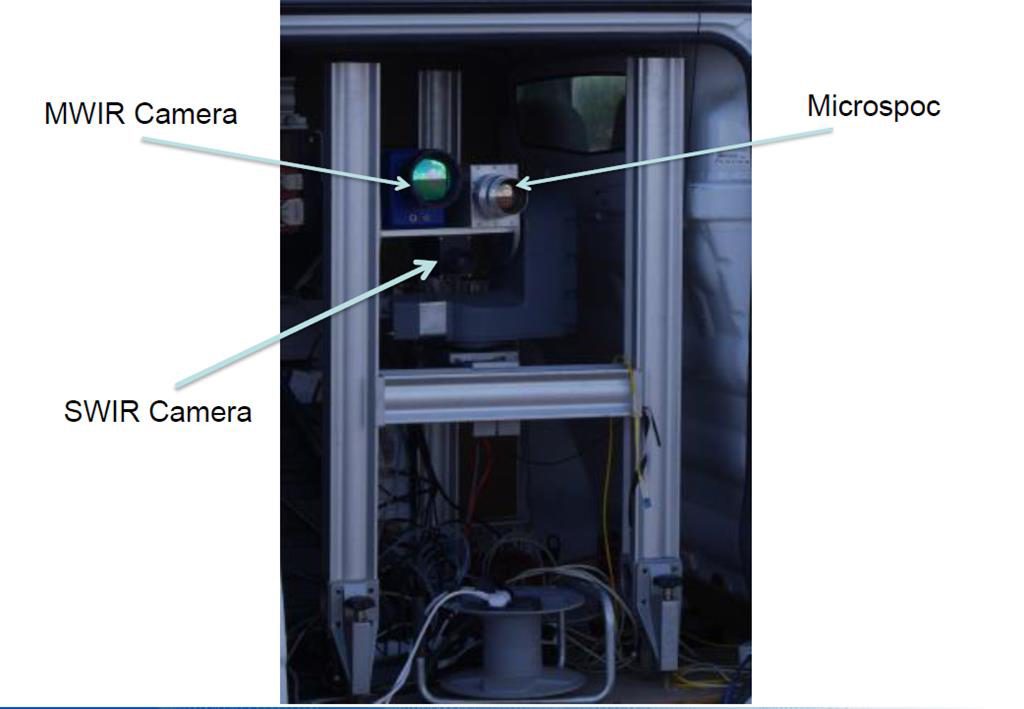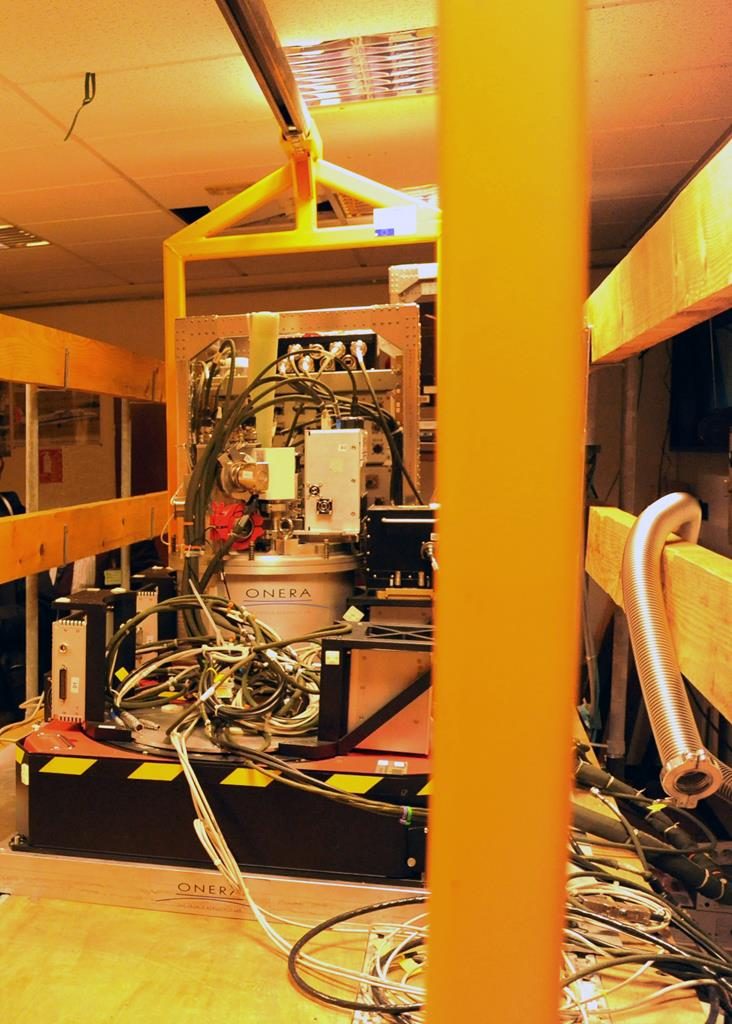The Office National d’Etudes et de Recherches Aérospatiales, the French aerospace lab, was the first stop, the centre is also involved in research studies aimed at land defence systems. Some are linked to flight, as Bruno Sainjon, the Onera CEO explained: “in the early 1990s a group of our scientists together with elements of Direction Générale pour l’Armement (DGA) and of the Direction des Recherches et Etudes Techniques started working on the idea of a much quieter helicopter blade with performances similar to those of available blades.” Starting from aerodynamics they developed an equation that led to what was patented in 2010 and that flew on an Airbus demonstration helicopter in early 2015. “It will be the blade used in the HIL 160, the light joint helicopter, formerly known as X4, currently undergoing qualification tests, and we believe this new technology will become a success in the 2020s,” Sainjon concludes, underlining the 30-year span between scientific developments and products. Noting that 90% of major technological revolutions come from the United States and 10% from Chine, Sanjon mentioned President Marcon’s view about a potential Franco-German or European defence research agency following the model of US Darpa, the latter defined by the Onera CEO as a “light organisation capable of taking risks, with successful programmes becoming worldwide successes.” He then closed his speech citing Oren Harari, a business professor at the University of San Francisco, Sanjon concluded saying that “electric light did not come from the continuous improvement of candles.” Science development is always the starting point.
Why innovating in the land defence domain? The answer was provided by ICA Delphine (last names cannot be mentioned for security reasons) representing the DGA. She underlined how land is a more difficult environment compared to air and sea, being highly diversified and partitioned. Looking at the future innovation these will go beyond traditional functions such as protection, observation, fire, mobility, energy and support, including also collaborative combat, which is based on what the French call “infovalorisation”, that is exploiting distributed information in order to create synergies between actors on the field in order to enhance not only lethality, what the French call “combat collaborative”, collaborative combat, but also soldiers safety, through collaborative protection, the idea being that of gaining time in order to react quicker than the enemy, exploiting data fusion of all information available. The DGA officer expanded the protection subject, mentioning researches which are being done in the field of passive protection for vehicles, but also announcing that France is working at active protection, both with soft and hard kill solutions, collateral damages being the major concern for the latter. The first demonstrator of those systems will be installed on a UGV. Another key element is night vision, where France intends to maintain the technological edge over potential opponents, looking at fusion plus virtual reality but also at laser imagery, capable to pinpoint reflecting objects in any light condition. As for energy, the French National Research Agency (ANR) is funding the so-called “Sodium” programme that aims to challenge preconceived ideas that Sodium-ion could not compete with Lithium-ion solutions in terms of energy and power rate, the search for alternative solutions to lithium being driven by the fear that limited supplies of that material will be available in the future. According to ICA Delphine the target is to have batteries that will have half the weight of current Li-Ion systems. Other programmes are also financed by the ANR, as they look for dual-use solutions to be employed both in military and civilian environments: one of these is MALIN (MAitrise de la Localisation INdoor) aiming at ensuring precise navigation in GPS-denied environments such as inside buildings. Five projects were selected in July 2017, the five teams having now three years to bring them to fruition, technologies used being inertial, radio frequency and magnetic. Other programmes are ongoing in various fields, but looking at the future ICA Delphine underlined that artificial intelligence (AI), data fusion and shape reconnaissance will be three of the most promising fields of research, one of the outcome being the Focus programme aiming at improving target acquisition and identification using collaborative observation to allow de-camouflage. AI will be a key element in the collaborative combat, which will be part of Phase 2 of the Scorpion programme, allowing for example the hand-over of robots from under armour, while semi-autonomous navigation for vehicles is also considered. Many of the technological research programmes currently underway will be key in generating the building blocks that will lead to two major programmes of the future, MGCS (Main Ground Combat System) and CIFS (Common Indirect Fire System), that is the future main battle tank and artillery system of the French Army. According to ICA Delphine the concepts for the future MBT are currently under discussion between French and Germany, and something might emerge in mid-2018.
From theory to reality, a tour in the Onera laboratories at Palaiseau, close to the premises of the École polytechnique, a leading French institute which combines top-level research, academics, and innovation at the cutting-edge of science and technology.
The first lab is the DTIS (Département du Traitement de l’Information et Systèmes), the Information Processing and Systems Department. Here one of the main activities is related to surveillance and intelligence sensor networks. The aim of the research is to see what can be done in terms of intelligence of connected objects, in order to propose a new approach based on smart and low-cost sensors. Two main uses are foreseen, area surveillance aimed at protecting infrastructures and intelligence gathering. The programme wants to validate the contribution of low-cost sensor networks deploying them in different scenarios, while from the technical standpoint the objective is to improve the autonomy up to various days if not weeks, to optimise the number and position of the different sensors, and to adopt intelligent data processing in order to provide only relevant information to the operator. The network adopts an LWM2M open architecture, a protocol for machine-to-machine or Internet of Things device management. Alarm smart nodes that activate the network were developed, a V1 version in 2016 and a the more robust V2 in 2017, capable of sharing resources and handle concurrent tasks, and of reducing power consumption. New sensors have also been made available, such as MEMS-based seismic ones providing also distance data; as for optronics, the effort is to improve detection and classification, using new clutter suppression techniques and geometrical image characterisation, that allow extracting the target image and geolocalise it. As for radars, smart boxes containing separately emitters and receivers are being, their spread on the ground, multistatic radar allowing to pick-up also targets hidden behind an obstacle; this type of sensor is however not ready yet, so tests were conducted with conventional radars. These new sensors are being fitted with GPS and accelerometers in order to allow autonomous placement, without the need of human inputs such as orientation data etc, while for optronic ones these are fitted with embedded light sensors that switch on and off the right sensor according to light conditions, in order to spare energy. All those data, provided by one or more sensors and relative to one or more moving targets, are provided to the smart node that deals with localisation, trajectography, using MHT (Multiple Hypotheses Tracking) and VS-IMMC (Variable Structure – Interacting Multiple Model with Constraints) algorithms, and classification. Tests were carried out by DGA’s Unités de Management – Opérations d’armement terrestres/techniques terrestres (UM-TER/TT, in cooperation with Safran and with contributions from Onera, the latter providing heterogeneous sensor fusion capacity as well as video-processing systems, two French Army units being involved, the 13th Engineers Regiment and the 2nd Hussars Regiment, respectively for site protection and intelligence gathering. Passive IR, magnetic, visible optronic, IR optronic, acoustic and radar sensors allowed track initialisation, multiple track confirmation, and ground target tracking, as well as small-UAV detection and tracking, some work being still necessary for group tracking. Other site protection tests were financed by the STAT (Section Technique de l’Armée de Terre) and were carried out in cooperation with Ardanti Défense, a company specialised in intuitive visualisation and simulation tools. The Onera provided again heterogeneous sensor fusion as well as an on-board fusion module. Tests showed the capacity to deploy the system in less than 10 minutes, to automatically slave cameras on hot tracks, although some work has still to be finalised at short term, in order to integrate innovative sensors, mostly radars, to correlate tracks to better understand the scenario. In the longer term threat evaluation and a higher level intelligence are among the objectives.
DOTA (Département Optique et Techniques Associées), the Optical and Associated technologies Department, where studies on the threat IR signature are conducted. The study aims at helping the development of threat detection systems, and focuses on behaviour modelling of the IR signature depending on the type of threat, time, aspect angle and spectral band. The DOTA developed a multiband measuring instrument based on three sensors, a FLIR Systems Medium Wave IR camera with 1,000 Hz frequency and a 100 x 100 pixel sensor, a Photonis Science Short Wave IR camera, with a frequency between 1,000 and 1,500 Hz and a 50×50 pixel sensor, and a Medium Wave IR spectrometer developed by the ONERA itself with a 2.5 – 5.2 µm spectral band and frequency between 3 and 100 Hz. This is used for static measurements in laboratory as well as real firing measurements. The ONERA continues to develop its IR signature studies, and is part of NATO Air Force Armaments Group Air Capability Group 3 Sub Group 2 InfraRed Technical Team.
The Onera is involved in the Anti-Drone field, through the Shield programme, which monitors technology studies and developments. Shield is focused on site protection and urban scenarios, and its studies aim at optimise fusion architectures, sensors deployment, and to generate a cost reduction strategy. It leverages the results obtained by the Angelas (ANalyse Globale et Évaluation des technologies et méthodes pour la Lutte Anti UAS, global analysis and evaluation of technologies and methods for countering UAS) programme. Angelas aimed at detecting, reconnoitre and identify UAS of less than 25 kg correlating data provided by multiple sensors, around critical installations such as nuclear power plants, as well as in urban areas and for the surveillance of major events. Compared to Angelas, Shield takes also in count effectors and not only sensors, and aims at gathering also external competencies in order to bring innovation in the anti-drone field. Shield will start in January 2018 and will last three years, the main topics being innovative sensors, systemic approach, and new paradigm for data processing. Shield will profit of open technological-operational laboratories, will use the Onera fleet of drones based in Toulouse, and will generate dedicated studies. One of them will concern 3-Dimension LIDAR, a short range detection system that the Onera scientists consider extremely promising, towards both fixed and rotary wing UAS.
The Onera is involved in the Sysiphe (SYstème Spectro-Imageur de mesure des Propriétés Hyperspectrales Embarqué) programme, together with the Forsvarets forskningsinstitutt (FFI), the Norwegian Defence Research Establishment, and with Norsk Elektro Optikk A/S (NEO), an electro-optics Norwegian privately owned research oriented company. The first phase, which ended in 2013, was to put develop a set of sensors able to acquire hyperspectral images, from visible to thermal infrared, and to package them in order to be airportable. NEO dealt with the instrument dedicated to the visible and short wave IR spectrums known as HySpex Odin-1024, while Onera was in charge of that dedicated to the medium and long wave IR spectrums, the Sieleters. The latter need an effective cooling machine, sensors being taken at –200°C in order to get the best possible results. A real time processing system for the Hyspex Odin has been developed by FFI/NEO, while Onera developed an archiving and processing data system for the Sieleters allowing to perform atmospheric compensation at all wavelengths. Sensors are mounted on a rugged aluminium structures for high mechanical stability and installed on a Do-228 provided by the Deutsche Zentrum für Luft- und Raumfahrt (DLR), the Germany national aeronautics and space research centre. Validated in 2041, the Sysiphe is now available for research programmes some of the aims of the French and Norwegian MoDs being to improve target detection under camouflage, as well as discrimination between real targets and decoys.



